As part of our ongoing research, Te Māngai Pāho has worked with Nielsen to segment the population against the KoPA model. This helps us understand at a glance the attitudes and behaviours of the Aotearoa New Zealand population towards te reo Māori and Māori culture.
The KoPA model continuum was first adopted by Te Māngai Pāho in 2016. Adapting the theoretical ZePA model developed by Professor Rawinia Higgins and Dr. Poia Rewi. As a language agency, our goal is to shift the population in a positive direction towards Māori language and culture. The goal is to ‘right-shift’ the population, which is to shift the population to the right of the KoPA continuum from kore to pō to awatea.
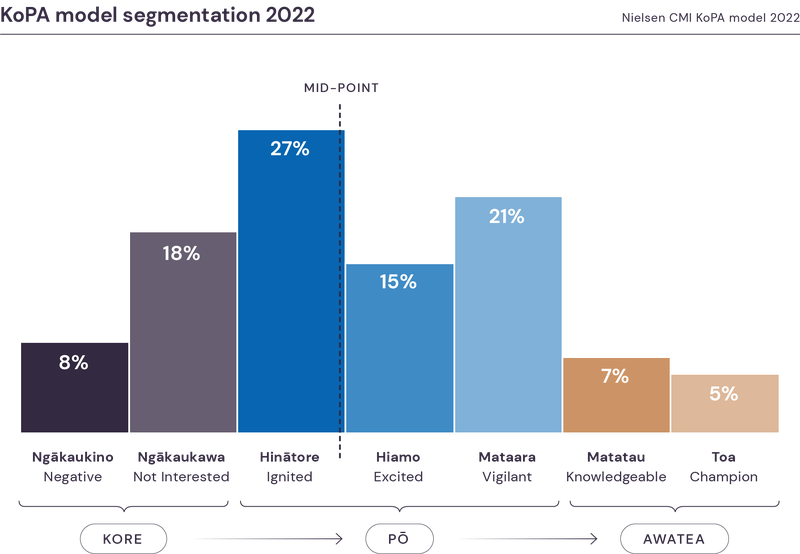
KoPA Personas
To understand these segments of the population better, we have developed a set of personas which look at their demographics, cultural and media engagement. The personas have been carefully curated using data from the Te Māngai Pāho KoPA segmentation within the Nielsen quarterly Consumer Media and Insights survey.
This is our first iteration of these personas. As we develop the model and as behaviours change we will look to track the changes in our personas as well.
Awatea — Maia
Those in Awatea are more likely to be Māori, female and independent young adults. Traditional spiritual beliefs is a vital part of their lives and they value cultural identity, social networking and being involved in the community. Awatea have a good understanding of te reo Māori, often choosing to communicate with it throughout the day.
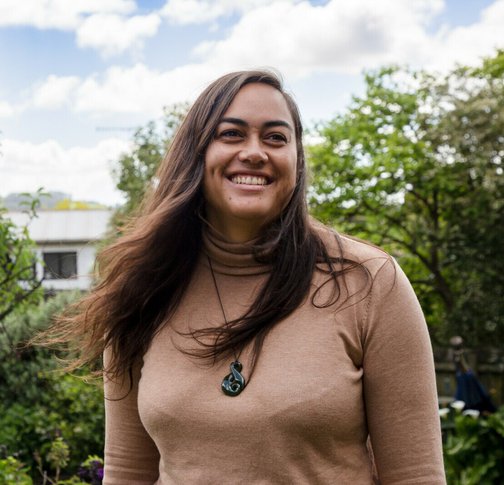
Generation/Age
Millennial, aged late 20’s
Ethnicity
Māori
Region
Te Moana-a-Toi | Bay of Plenty
Percentage of Population
12% of all people aged 15+
Media & Technology Habits
They are tech savvy, tend to spend a lot of time on social media, regularly listen to Māori music and are prevalent magazine/newspaper readers. They tend to watch the same amount of TV as the average New Zealander and watch Whakaata Māori and Te Reo channels weekly. They are more likely to watch Te Māngai Pāho funded content. They are also avid sports fans.
Pō 3 — Moana
Those in Pō 3 are more likely to be young adults of Māori or Pasifika ethnicity. They hold strong cultural and family values and enjoy staying up to day with the latest trends. They have a moderate connection with te ao Māori and have some knowledge of te reo Māori and intend to improve their proficiency. They strongly believe that te reo Māori and Māori culture should be valued by all and taught in schools.
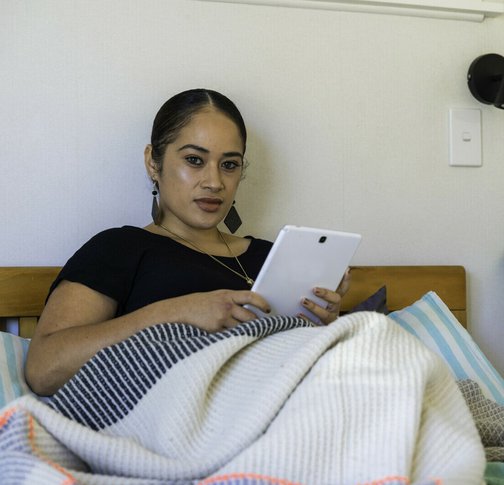
Generation/Age
Gen Z – Late 20’s
Ethnicity
Māori and Pacific Islander
Region
Te Whanganui-a-Tara | Wellington
Percentage of Population
22% of all people aged 15+
Media & Technology Habits
Pō 3 are heavy internet users and top this up with a medium amount of television viewing. They watch a lot of news, movies and sport. They have some interaction with Te Māngai Pāho funded content, mainly through watching TV.
Persona shift
A shift from Pō3 to Awatea would require a change from a strong advocate to being an occasional speaker of te reo Māori, a promoter, a learner to being behaviorally active; or have a basic to fluent understanding of te reo. This would be a shift from supporting te reo and Māori culture, to actively taking part and improving their own te reo to a higher fluency level.
Pō 1 & Pō 2 — Adrian
Those in Pō 1 and Pō 2 are likely to be independent young adults, male and of Asian descent. They are also likely to perceive themselves to be knowledgeable and skilled with technology. Traditional values and beliefs are important to them, and they’re proud of where they live. They tend to have some understanding of Māori culture, but not a strong desire to learn more.
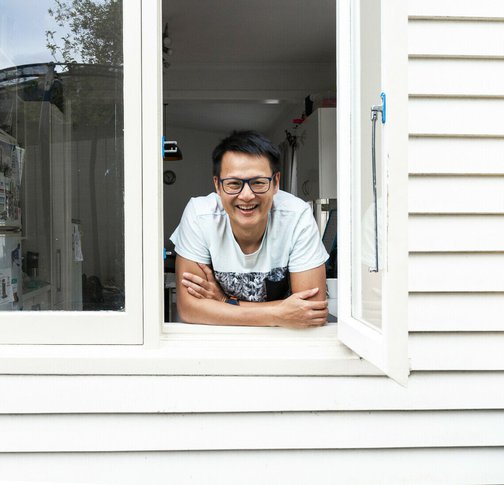
Generation/Age
Millennial, early 30’s
Ethnicity
Asian, more likely to be Chinese or Indian
Region
Tāmaki Makaurau | Auckland
Media & Technology Habits
They tend to watch slightly less TV than the average New Zealander, but engage in NZ news websites. They seldom watch Te Māngai Pāho funded content or tune into radio stations.
Persona Shift
Pō 1 and Pō 2 have shown positive inclination to shift to Pō 3 but have not given any thought as to how to improve their knowledge of te reo Māori and Māori culture. They closely align with Pō 3 on the intention to improve their understanding, but do not agree as much on whether is should be used widely promoted.
Kore — Ronald
Those in Kore are more likely to be retired empty nesters, male and Pākehā. They enjoy fishing, gardening, watching cricket and are carefree and financially comfortable. They tend to be critical of Aotearoa New Zealand, have very little knowledge of te reo Māori and Māori culture, and don't believe it should be valued by all New Zealanders.
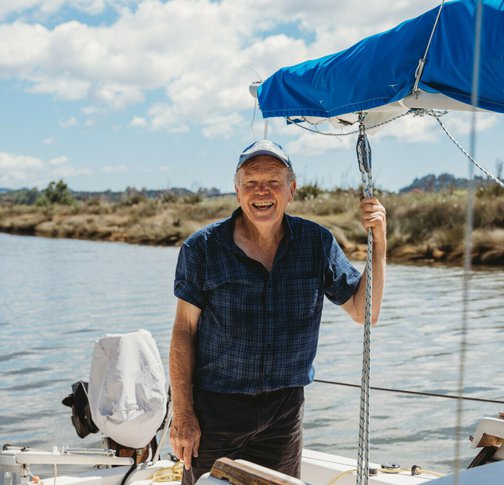
Generation/Age
Baby Boomer, aged 60 years+
Ethnicity
NZ European/Pākehā
Region
Te Waipounamu | South Island
Percentage of Population
22% of all people aged 15+
Media & Technology Habits
They can be reached through traditional media channels - TV, radio, and newspapers. They actively choose not to watch Te Māngai Pāho funded content or tune into radio stations.
Persona Shift
A move to Pō would require a shift in views toward te reo Māori and Māori culture. There is some indication that they may be open to improving their te reo Māori and being more accepting of te reo Māori in everyday life.
Read more about the KoPA personas
Download the full report, executive summary and infographic on the KoPA personas. Head to our Documents page for more information on our research on KoPa.